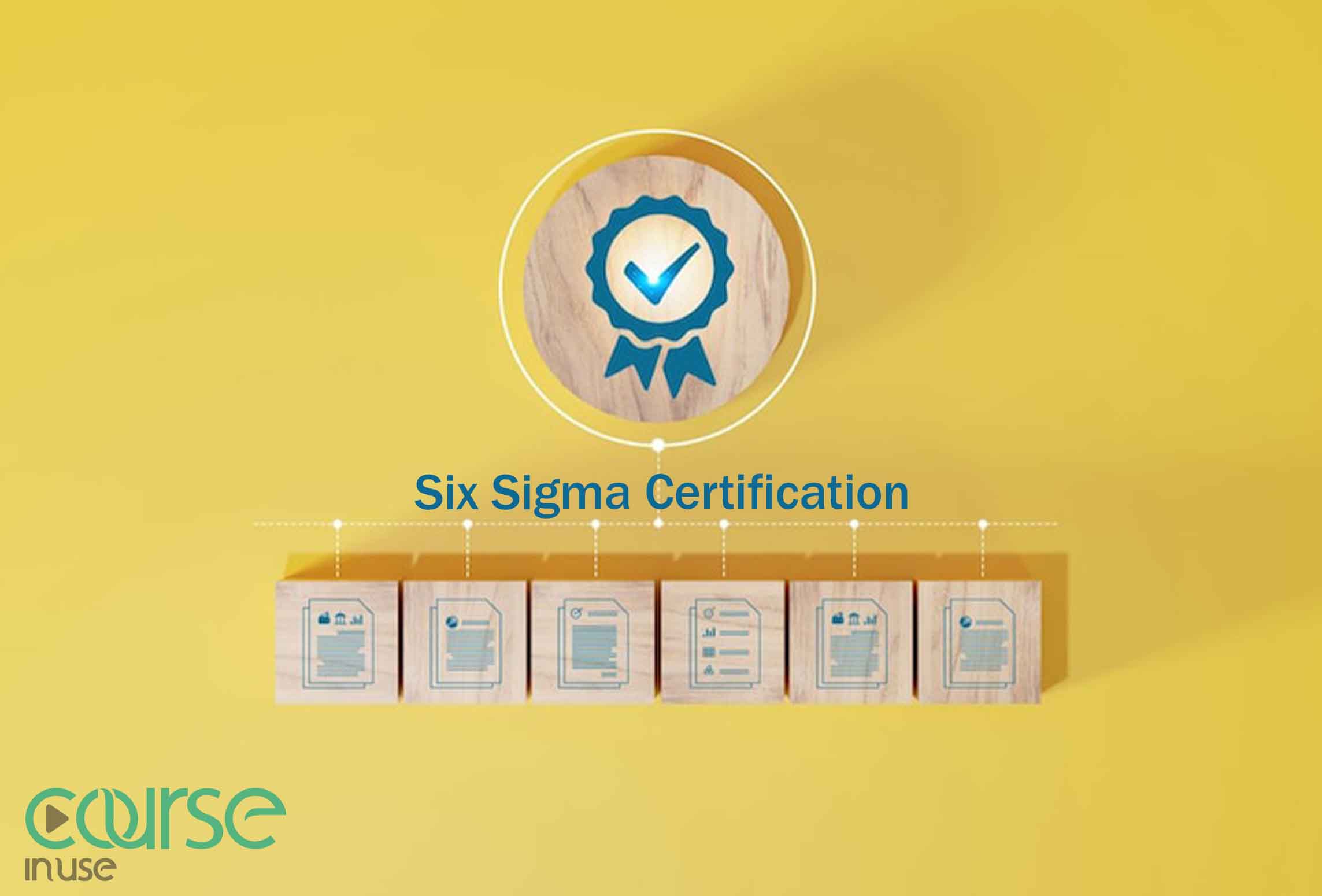Obtaining management certifications, such as Six Sigma certification, can significantly enhance your career opportunities, develop essential management skills, and improve your income potential. Among the numerous professional development courses available, certain certifications stand out for their impact on your resume.
For instance, Six Sigma certification focuses on enhancing quality and efficiency in processes, making it highly valuable in specific industries such as manufacturing and healthcare. In contrast, project management certifications like PMP (Project Management Professional) and PRINCE2 emphasize comprehensive project management and process optimization.
Moreover, an MBA (Master of Business Administration) provides a holistic approach to business management, designed to cultivate leadership skills across all areas of an organization. Additionally, CAPM (Certified Associate in Project Management) is recognized as an entry-level certification, ideal for those new to the project management field.
Ultimately, the choice between these management certifications should align with your career goals and experience level. Therefore, it’s crucial to make an informed decision to maximize your professional growth and success.
What Is Six Sigma Certification?
Six Sigma is a collection of business management strategies aimed at optimizing processes by reducing defects and minimizing variation. Six Sigma certification validates an individual’s expertise in recognized quality control practices and indicates that the person is skilled in applying Six Sigma techniques. These approaches emphasize data-driven analysis and problem-solving to boost overall operational performance and productivity. Six Sigma certifications are granted at various tiers, similar to the belt ranking system in martial arts, with each tier signifying a higher level of knowledge and competence in this methodology.
Six Sigma certification levels
Six Sigma certifications are awarded based on employees’ positions within an organization, categorized into various belt levels. These certifications are achieved through practical experience, structured training, and examinations. The Six Sigma belt levels include:
- White Belt:
- Basic Understanding: Introductory knowledge of Six Sigma concepts.
- Key Terminology: Learn essential terms and the role of Six Sigma in business environments.
- Entry-Level Certification: Suitable for individuals beginning their journey in process improvement.
- Course Completion: Granted upon finishing an introductory course covering Six Sigma tools, history, and system structure.
- Yellow Belt:
- Deeper Knowledge: More in-depth understanding compared to the White Belt.
- Project Support: Focus on assisting improvement projects and understanding specific tools.
- Operational Level: Granted for participation in projects and passing an exam that demonstrates knowledge of Six Sigma implementation.
- Green Belt:
- Intermediate Expertise: Involves applying Six Sigma tools and methods to solve specific problems.
- Departmental Implementation: Typically work under Black Belts to implement strategies at the departmental level.
- Knowledge Application: Required to learn Six Sigma principles and apply them in real projects, along with passing an exam demonstrating a thorough understanding of the Six Sigma process.
- Black Belt:
- Advanced Leadership: Focus on leading project teams and managing large, cross-functional projects.
- Expert Guidance: Provide mentorship to Green Belts and plan projects using Six Sigma principles.
- Comprehensive Knowledge: Must pass an exam demonstrating extensive knowledge of the Six Sigma process.
- Master Black Belt:
- Highest Certification Level: Focus on strategic management of Six Sigma initiatives.
- Training Role: Master Black Belts train both Black and Green Belts and specialize in project selection and development.
- Expert Understanding: Responsible for overseeing the implementation of Six Sigma projects across all areas, demonstrating expert knowledge of Six Sigma philosophies through examination.
- Champion:
- Senior Management Role: Responsible for implementing Six Sigma across all sectors of the organization.
Benefits of Six Sigma (Top 6 reasons why people really choose a Six Sigma Certification)

Benefits of Six Sigma for Employers
| Benefit | Description |
| Reduced Waste | Streamlining processes to minimize resource use. |
| Increased Efficiency | Enhancing productivity and speeding up production cycles. |
| Increased Revenue | Improving product and service quality, leading to higher sales. |
| Reduced Errors and Defects | Lowering costs associated with rework and customer complaints. |
| Increased Customer Satisfaction and Loyalty | Delivering high-quality products that meet customer expectations. |
| Enhanced Brand Recognition | Strengthening the brand’s reputation through consistent quality. |
Benefits of Six Sigma for Employees
| Benefit | Description |
| Higher Pay | Better job opportunities and potential for increased salaries. |
| More Opportunities | Access to a wider range of job roles and responsibilities. |
| Increased Job Security | Acquiring valuable skills that enhance employability. |
| Leadership Opportunities | Possibilities for advancement into managerial positions. |
Lean Six Sigma
Lean Six Sigma is an effective management methodology that integrates Lean principles, focused on eliminating waste and enhancing process flow, with Six Sigma strategies aimed at minimizing variation and defects. This combined approach leverages data-driven techniques and tools to boost operational efficiency, improve the quality of products and services, and maximize customer satisfaction. By continuously identifying and addressing inefficiencies within organizational processes, Lean Six Sigma enables businesses to achieve significant improvements in productivity and profitability, making it a valuable framework for organizations striving for excellence.
Six Sigma vs. Lean
| Aspect | Six Sigma | Lean |
| Objective | Reduce variation and defects in processes | Eliminate waste and improve process flow |
| Approach | Data-driven, using statistical analysis | Streamlining processes for enhanced speed and efficiency |
| Tools | Control charts, process mapping, hypothesis testing | Value stream mapping, 5S, Kanban |
| Methodology | DMAIC (Define, Measure, Analyze, Improve, Control) | 5 Lean Principles (Value, Value Stream, Flow, Pull, Perfection) |
| Outcome | Target of 3.4 defects per million opportunities | Increased value for customers through reduced costs and improved speed |
| Focus | Quality and defect reduction | Speed and waste reduction |
| Data vs. Process Flow | Heavily relies on statistical data | Prioritizes the flow of processes |
| Combination | Often combined with Lean into Lean Six Sigma | Can be integrated with Six Sigma for comprehensive improvement |
How Much Does Six Sigma Cost?
| Training Provider | Certification Level | Cost |
| Project Management Academy | Beginner Yellow Belt | $495 |
| Green Belt Training | $2295 | |
| Black Belt Training | $3595 | |
| The Council for Six Sigma Certification | White Belt Certification | free |
| Yellow Belt | $99 | |
| Green Belt | $159 | |
| Black Belt | $229 |
- Six Sigma training costs vary based on the training provider and the specific curriculum offered.
- Organizations may incur additional costs for hiring instructors and developing training materials.
How Long Does It Take to Get Six Sigma Certification?
The duration to obtain a Six Sigma certification varies based on several factors. If you’re undergoing training provided by your employer, it might take a week or longer. However, if you’re studying at your own pace in your free time, the process can take as long as necessary until you’re ready to pass the certification exam.
Job Opportunities with Six Sigma Certification
A Six Sigma certification is a significant asset in the competitive job market today. Professionals with Six Sigma certification are highly sought after and well-regarded. As more companies implement Six Sigma strategies to enhance efficiency and minimize defects, earning this certification can unlock global career opportunities for you.
The steps to obtain a Six Sigma certification (six sigma certifications how to get)

To obtain a Six Sigma certification, you need to follow several key steps:
- Choose the Six Sigma certification level: Six Sigma offers various levels, including White Belt, Yellow Belt, Green Belt, Black Belt, and Master Black Belt. Each level signifies your knowledge and expertise in Six Sigma methodologies and tools for process improvement.
- Select a Six Sigma training course: Many reputable institutions provide Six Sigma certification courses. It’s essential to select a certified training provider offering high-quality, accredited Six Sigma training, available both online and in-person.
- Complete the Six Sigma course: After enrollment, you will study key Six Sigma methodologies like process optimization, defect reduction, data analysis, and statistical tools essential for business improvement.
- Pass the Six Sigma certification exam: Upon completing the course, you must pass the Six Sigma exam based on the chosen certification level. The exam typically includes both theoretical questions and practical problem-solving related to Six Sigma tools and strategies.
- Gain practical Six Sigma experience: For higher-level certifications like Black Belt or Master Black Belt, you must complete real-world projects demonstrating your ability to apply Six Sigma principles in process improvement and business efficiency.
- Receive the Six Sigma certification: After successfully passing the exam and meeting all certification requirements, you will be awarded a Six Sigma certification, which is recognized globally.
Top organizations like the American Society for Quality (ASQ) and the International Association for Six Sigma Certification (IASSC) offer accredited Six Sigma certifications that enhance your career prospects and validate your skills in process improvement and quality management.
This Six Sigma certification guide outlines the steps to becoming a certified Six Sigma professional, unlocking high-demand career opportunities in global organizations.
The time required to obtain a Six Sigma certification.
The time required to obtain a Six Sigma certification can vary significantly based on several factors, including the certification level, the training program, and your prior knowledge. Here’s a general overview:
- Training Duration:
- White Belt: Typically requires a few hours to 1 day of training.
- Yellow Belt: Usually involves 1 to 2 days of training.
- Green Belt: Generally, consists of 2 to 4 weeks of training (often part-time), focusing on process improvement techniques.
- Black Belt: Typically spans 4 to 8 weeks of training (often part-time), covering advanced Six Sigma methodologies.
- Master Black Belt: Usually requires several months of training, depending on the program’s depth.
- Self-Study: Additional time for self-study may be necessary, especially for higher-level certifications like Green Belt and Black Belt, where mastering complex concepts is crucial for effective quality management.
- Project Requirements: For Black Belt and Master Black Belt certifications, candidates are often required to complete a practical project. The time commitment for this can vary widely based on the project’s scope and your availability to apply Six Sigma tools in real-world scenarios.
- Exam Preparation: Preparing for the Six Sigma certification exam may take a few weeks, depending on your familiarity with the course material and exam format.
Overall, the entire process to earn a Six Sigma certification can take anywhere from a few days to several months, depending on the certification level and your dedication to studying and completing required projects. This flexibility makes Six Sigma training accessible for professionals looking to enhance their skills in process improvement and defect reduction.
The Best Institutions for Obtaining Six Sigma Certification
If you’re looking to enhance your skills in process improvement and quality management, here are some of the best institutions for obtaining a Six Sigma certification:
American Society for Quality (ASQ): As one of the most reputable organizations in the field of quality and Six Sigma, ASQ offers a wide range of certification courses and training programs tailored for professionals seeking to improve their knowledge and expertise.
1.International Association for Six Sigma Certification (IASSC): This well-regarded organization provides internationally recognized Six Sigma certifications for various levels, ensuring credibility and industry recognition for your professional qualifications.
2.Villanova University: Known for its high-quality online and in-person Six Sigma courses, Villanova University issues valid certifications across different Six Sigma levels, making it an excellent choice for those pursuing a structured learning path.
3.Purdue University: Another reputable institution, Purdue University offers comprehensive Six Sigma training programs both online and in-person, helping professionals gain the skills necessary for effective quality improvement initiatives.
4.Lean Six Sigma Institute: This institute specializes in Six Sigma and Lean methodologies, providing focused training and valid certifications that equip participants with essential tools for process optimization.
5.Six Sigma Global Institute: Offering affordable online Six Sigma training courses, this institute provides globally recognized certifications, making it a practical option for individuals seeking flexible learning solutions.
6.Georgia Institute of Technology: With a commitment to quality education, Georgia Tech offers credible Six Sigma training programs featuring high-quality content, ensuring that you receive the knowledge necessary for success in the field.
When choosing the right institution for your Six Sigma certification, consider your individual needs, the specific type of course, cost, and the time commitment required. Conduct thorough research and verify the credibility of the institutions to ensure you make an informed decision for your professional development in Six Sigma.
Unlock Your Potential with Six Sigma Certification
In today’s competitive job market, a Six Sigma certification can set you apart from others. This globally recognized credential enhances your skills in process improvement and quality management, making you a valuable asset in any organization.
At CourseInUse, we offer comprehensive Six Sigma training programs for various levels, from White Belt to Master Black Belt. Our courses are designed by industry experts and include both online and in-person learning options.
Why Choose CourseInUse?
- Expert Instructors: Learn from experienced professionals.
- Accredited Certification: Strengthen your resume with recognized certifications.
- Comprehensive Curriculum: Gain in-depth knowledge of Six Sigma methodologies and tools.
- Career Advancement: Increase your job prospects and earning potential.
Don’t miss the opportunity to elevate your skills and passion. Enroll in our Six Sigma courses at CourseInUse today and become a driving force for quality and efficiency!




